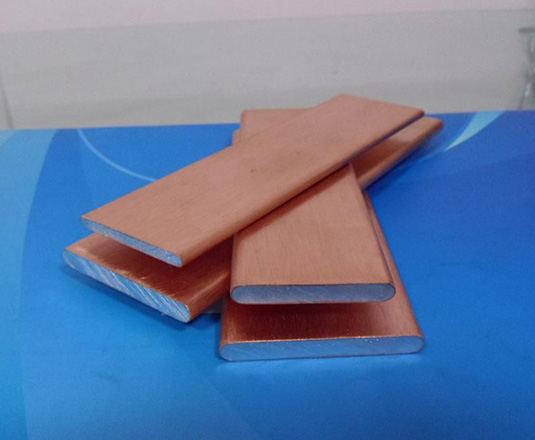The copper clad aluminum busbar are made of copper with an outer layer and aluminum with an inner layer and widely used high and low voltage power distribution cabinets,construction,etc.
Recently, a batch of copper coated aluminum busbars produced by us are sent to Pakistan. The copper clad aluminum busbar are made of copper with an outer layer and aluminum with an inner layer. They are mainly used in high and low voltage power distribution cabinets, construction and other industries.

Transmission and distribution equipment is an integral part of the transmission and distribution of electrical energy between power plants and power users in the power system. Conductor materials are also an important part of transmission and distribution equipment. They are responsible for the current transmission process.The conductor material is mainly copper (aluminum) wire, copper (aluminum) cable, copper (aluminum) busbar, etc.
With the shortage of copper resources and the rapid growth of the consumption of conductor materials in the power industry, the copper price is running at a high level and the volatility is large. As a result, the cost of raw materials for transmission and distribution equipment manufacturers has risen rapidly, and the operating risks and pressures have also increased dramatically.
In recent years, the appearance of new copper coated aluminum busbar has greatly eased this trend. The copper-aluminum composite material is a bimetallic composite material in which aluminum is the core and the outer layer is copper. It is a combination of high conductivity of aluminum, low cost resources, high chemical stability of copper, and low contact resistance. A new type of conductor material that realizes low cost and energy saving.
Copper clad aluminum row is also called copper coated aluminum busbar or al cu buabar,Due to different processing techniques, their performances are also different. The processing techniques that currently appear on the market include cladding welding, rolling crimping, hydrostatic extrusion, and die casting and continuous rolling.
The key issues to be solved for copper-aluminum composite conductor materials are:
1.Interface bonding strength.
2.The uniformity of the coating.
3.Current-carrying capacity of the conductor material.
4.Production efficiency, yield rate.
GET A QUOTE